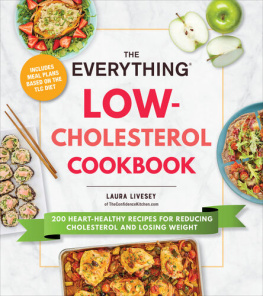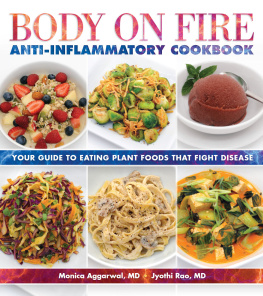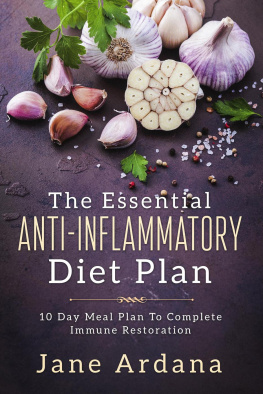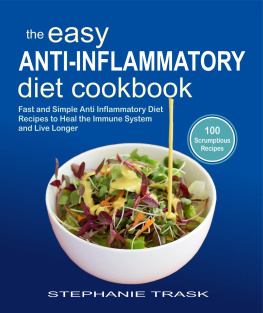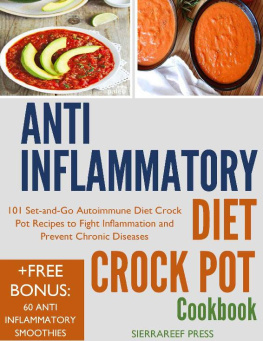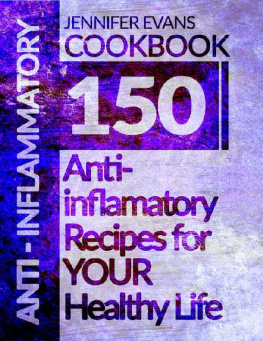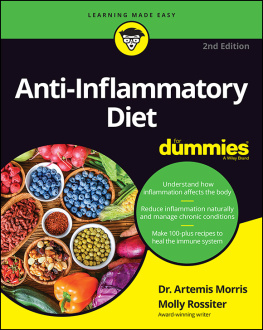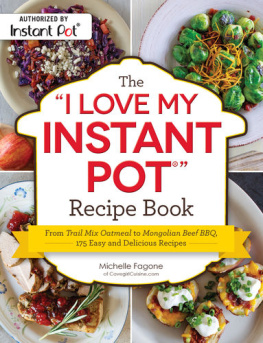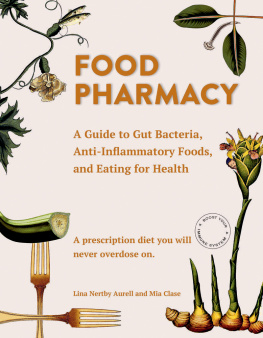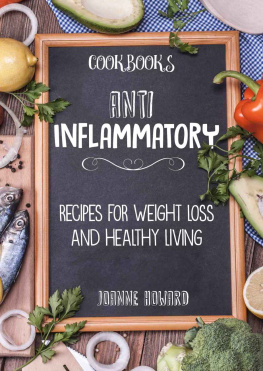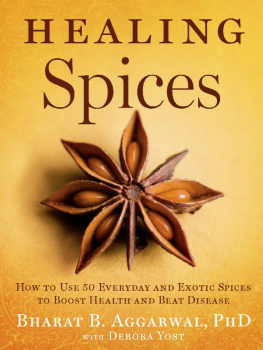Aggarwal Bharat B. - Anti-inflammatory Nutraceuticals and Chronic Diseases
Here you can read online Aggarwal Bharat B. - Anti-inflammatory Nutraceuticals and Chronic Diseases full text of the book (entire story) in english for free. Download pdf and epub, get meaning, cover and reviews about this ebook. City: Cham, year: 2016;2018, publisher: Springer International Publishing, genre: Romance novel. Description of the work, (preface) as well as reviews are available. Best literature library LitArk.com created for fans of good reading and offers a wide selection of genres:
Romance novel
Science fiction
Adventure
Detective
Science
History
Home and family
Prose
Art
Politics
Computer
Non-fiction
Religion
Business
Children
Humor
Choose a favorite category and find really read worthwhile books. Enjoy immersion in the world of imagination, feel the emotions of the characters or learn something new for yourself, make an fascinating discovery.
- Book:Anti-inflammatory Nutraceuticals and Chronic Diseases
- Author:
- Publisher:Springer International Publishing
- Genre:
- Year:2016;2018
- City:Cham
- Rating:5 / 5
- Favourites:Add to favourites
- Your mark:
- 100
- 1
- 2
- 3
- 4
- 5
Anti-inflammatory Nutraceuticals and Chronic Diseases: summary, description and annotation
We offer to read an annotation, description, summary or preface (depends on what the author of the book "Anti-inflammatory Nutraceuticals and Chronic Diseases" wrote himself). If you haven't found the necessary information about the book — write in the comments, we will try to find it.
Anti-inflammatory Nutraceuticals and Chronic Diseases — read online for free the complete book (whole text) full work
Below is the text of the book, divided by pages. System saving the place of the last page read, allows you to conveniently read the book "Anti-inflammatory Nutraceuticals and Chronic Diseases" online for free, without having to search again every time where you left off. Put a bookmark, and you can go to the page where you finished reading at any time.
Font size:
Interval:
Bookmark:

IUPAC name | (1E,6E)-1,7-bis (4-hydroxy-3-methoxy phenyl)-1,6-heptadiene 3,5-dione |
|---|---|
Molecular formula | C21H20O6 |
Molecular weight | 368.39 |
Melting point | 170175 C |
Experimental dipole moment in dioxane | 3.32 D |
Absorption maximum and extinction coefficient fluorescence maximum in methanol | 425 nm, 55,000 dm3 mol-1 cm-1 530 nm |
Solubility | Insoluble in water Soluble in ethanol, methanol, chloroform, hexane, DMSO |
Prototropic equilibrium constant (pKa) (three pKas) | pKa (1), Enolic proton: 7.78.5; pKa (2), Phenolic proton: 8.510.4; pKa (3), Phenolic proton: 9.510.7 |
log P value | ~3.0 |
Color and odor | Yellow at neutral pH, red in alkaline pH; odorless |
Font size:
Interval:
Bookmark:
Similar books «Anti-inflammatory Nutraceuticals and Chronic Diseases»
Look at similar books to Anti-inflammatory Nutraceuticals and Chronic Diseases. We have selected literature similar in name and meaning in the hope of providing readers with more options to find new, interesting, not yet read works.
Discussion, reviews of the book Anti-inflammatory Nutraceuticals and Chronic Diseases and just readers' own opinions. Leave your comments, write what you think about the work, its meaning or the main characters. Specify what exactly you liked and what you didn't like, and why you think so.


